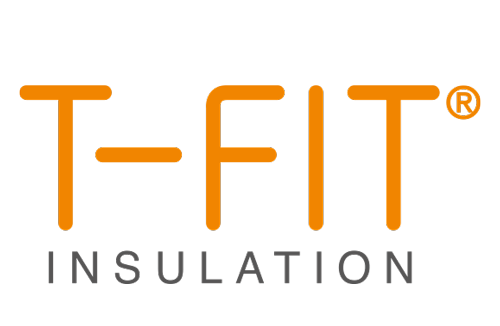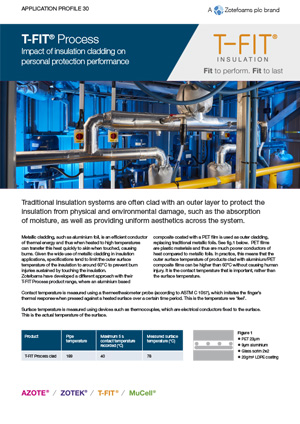T-FIT Process Application profile 30-Cladding
Traditional insulation systems are often clad with an outer layer to protect the insulation from physical and environmental damage, such as the absorption
of moisture, as well as providing uniform aesthetics across the system.
Metallic cladding, such as aluminum foil, is an efficient conductor of thermal energy and thus when heated to high temperatures can transfer this heat quickly to skin when touched, causing burns. Given the wide use of metallic cladding in insulation applications, specifications tend to limit the outer surface temperature of the insulation to around 140°F to prevent burn injuries sustained by touching the insulation.
Zotefoams have developed a different approach with their T-FIT Process product range, where an aluminum based composite coated with a PET film is used as outer cladding, replacing traditional metallic foils PET films are plastic materials and thus are much poorer conductors of heat compared to metallic foils. In practice, this means that the outer surface temperature of products clad with aluminum/PET composite films can be higher than 140°F without causing human injury. It is the contact temperature that is important, rather than the surface temperature.

